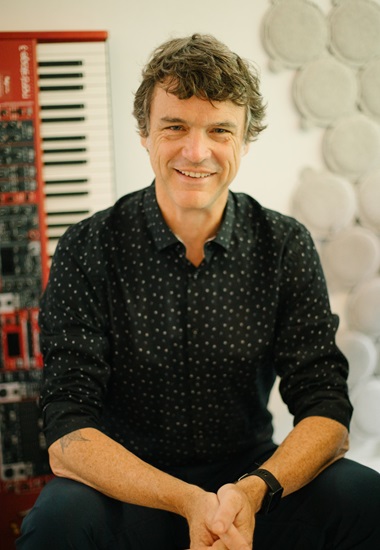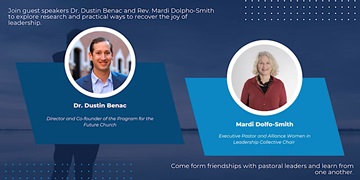
Mark Glanville is an active participant in the Vancouver jazz scene.
There is a missing middle-ring of social relationships, the ring of social relationships where we once learned to value one another in our differences.
The church can play a role in this middle sphere of relationships. The church can be place where we live with one another for the long haul, despite our disagreements.
The middle-ring of social interaction – the village level – is eroded in culture today, like a beachhead without protective grass.1
Derek Thompson, in The Atlantic, has argued that the erosion of the village leaves us vulnerable to waves of antagonism that are crashing over our neighbourhoods.
The village is where we used to practice the art of hard conversations. We learned to appreciate one another in our differences as we connected in local schools, bars, music venues, gyms, sport fields, hiking groups, arts hubs, volunteering and more. This is the middle-ring.
Today, people are far more likely to stay home than go out. We often opt to connect with close friends on our phones while watching a movie than to make plans to meet up. Growing isolation has diminished our village life.2
In the other direction, statistics indicate that there is a tendency to spend more time with family and other intimates.3 Our inner ring of social relationships tends to be stronger than in the past.
At the same time, there is an ever-strengthening outer ring, a felt solidarity with those with whom we share an ideology – usually through online relationships. Most of us connect readily with people who see the world as we do, and social media interweaves us endlessly with people we feel comfortable with.
And we may be reluctant to expend the emotional energy necessary to connect people who hold differing ideological beliefs. As an example, a United States Democratic senator Ruben Gallego (Arizona) recently commented that Democrats tend to be afraid to talk to someone who might disagree with them.4
While Gallego is probably overstating the case to make his point, as a progressive myself I can relate to his comment. I often feel resistant to slowing down enough to have a hard conversation with people who disagree with me. But I need to.
The twin shifts of the erosion of the village and the strengthening of the ideological tribe deepens the ideological siloing that divides us. It makes us vulnerable to believing the worst of others. The erosion of the village robs us of the opportunity to persist in relationships with others when we disagree, the opportunity to grow in our empathy for and understanding of those who see the world differently from us.
Let’s think historically for a moment. First century Greco-Roman culture was no stranger to profound cultural siloing. This is the ancient world in which the New Testament (the second half of the Bible) was written. Staying with the New Testament, in Ephesians chapter 4, for example, we see that the house churches in Ephesus are in the middle of a heated conflict. The broader letter to the Ephesians deals with the vexed question of the relation of Gentiles to Judaism; this, among other issues, threatened to tear these house churches apart.
The author, the Apostle Paul, is coaching these early Christians in how to maintain a level of unity in the middle of their disagreement. What is remarkable about Ephesians 4 is that Paul has opinions, strong opinions. So Ephesians 4 is as remarkable for what Paul doesn’t say as for what he does.
As I show in my book, Improvising Church: Scripture as the Source of Harmony, Rhythm, and Soul, Paul sets his own argumentation aside and he urges the church to talk, knowing that some will say things he disagrees with. They are to “speak the truth in love,” seeking Christ even as they seek one another in Christ.
In speaking the truth in love, we can be like-hearted, even though we disagree. We can be like-hearted by agreeing to be present to one another, in relationship for the long haul. We can be like-hearted in our shared commitment to shine the light of Christ to one another, within a particular neighbourhood, into the years.
“Like-heartedness” reflects our commonality better than “like-mindedness,” Christopher Smith reflects in his book, How the Body of Christ Talks.5 We are not called to a false unanimity, but to like-heartedness.
Amidst sharp cultural difference, the gospel formed the New Testament church as participants in the middle-ring of relations. This was the space in which Jewish and Gentile Christ followers learned to “speak the truth in love,” “maintaining the unity of the spirit in a bond of peace,” even when disagreements felt fatally strong (Ephesians 4).
Today, following the Apostle Paul’s guidance in Ephesians 4, churches can become that missing middle space: a sphere for relationships where we work stuff out, learning to appreciate the potentially noble motivations and values that lie beneath the opinions of those with whom we disagree.
Churches can learn the art of having communal conversations; we can intentionally learn skills for talking about the most difficult issues that divide us. And we can learn to trust the potential of conflict to transform us.
Doesn’t Christ’s call for his followers to be the church present an opportunity for us to develop a muscle memory for embracing those who think differently from us? If we commit to one another for the long haul, if commit to learning the skills for having hard conversations, then surely the church can be a place where we remake the missing middle-ring of social relationships.
Developing this muscle memory can lead us not only toward embracing one another across ideological distances, but also toward embracing the ‘distant’ stranger, the vulnerable person seeking a home. (Though in our globalized era, the distant stranger is not so distant.) As Pádraig Ó Tuama reflects, “If God is to be found, God will be found in the space in between.”
1 Derek Thompson, “The Anti-Social Century,” The Atlantic (2025): 28-38, at 33.
2 Derek Thompson, “The Anti-Social Century,” 31-32.
3 Derek Thompson, “The Anti-Social Century,” 33.
4 Gallego said this on “The Daily,” February 15th, 2025.
5 C. Christopher Smith, How the Body of Christ Talks: Recovering the Practice of Conversation in the Church (Grand Rapids, MI: Brazos, 2019), 153.
Dr Mark Glanville works as Director of the Centre for Missional Leadership on the UBC campus. He is an Old Testament scholar, and has written five books, including Improvising Church: Scripture as the Source of Harmony, Rhythm, and Soul and Preaching in a New Key: Crafting Expository Sermons in Post-Christian Communities.
Mark’s vocational goal is to research, teach, write, speak and play music to nourish Christian leaders to creatively reimagine what the church can be and do in post-Christian societies, with the Bible in our hands. Mark is also a professional jazz pianist, active on the Vancouver jazz scene. Mark’s podcast is Blue Note Theology – “The only podcast in the world hosted from the grand piano!” His personal website is: https://www.markglanville.org
He has two events coming up in the next couple of weeks:
- Finding Real Friendships in Pastoral Ministry:
 Join Dr. Dustin Benac & Rev. Mardi Dolpho-Smith April 25, 9 am – noon for Finding Real Friendships in Pastoral Ministry at the Centre for Missional Leadership at UBC to explore practical ways to recover the joy of leadership.
Join Dr. Dustin Benac & Rev. Mardi Dolpho-Smith April 25, 9 am – noon for Finding Real Friendships in Pastoral Ministry at the Centre for Missional Leadership at UBC to explore practical ways to recover the joy of leadership.
Come gather by the open fire!
- Preaching in a New Key book launch:
Mark will launch Preaching in a New Key at Pacific Theatre May 3: “Join us for a dialogical exploration of preaching – and of spoken communication in general – through music, art, poetry, and conversation.”

Mark has posted this comment on this site as a member of The Bell: Diverse Christian Voices in Vancouver. Go here to see earlier comments in the series.

Thank you for this important and insightful piece on the importance of nurturing the “village” and the “middle ring” of relationships and interactions.
However, what you focus on determines what you miss. A village is not made up only of the people living in the present; a village has a history, has roots, has stories. And, furthermore, a village is not made up only of people. There is the place itself, the land, the flora, fungi, fauna and all the interconnections. “All our relations.” The playground; the empty lot on the corner; the big maple in the middle of the avenue; the coyote ambling down the street one early morning; the earthworms at work in the soil; the geese honking overhead. And all the people.
A healthy village is like an old-growth forest. We are called to do our part in regaining and retaining such a healthy village or neighbourhood where we can all thrive. “It takes a village to raise a child.” It takes a village to live a good life.